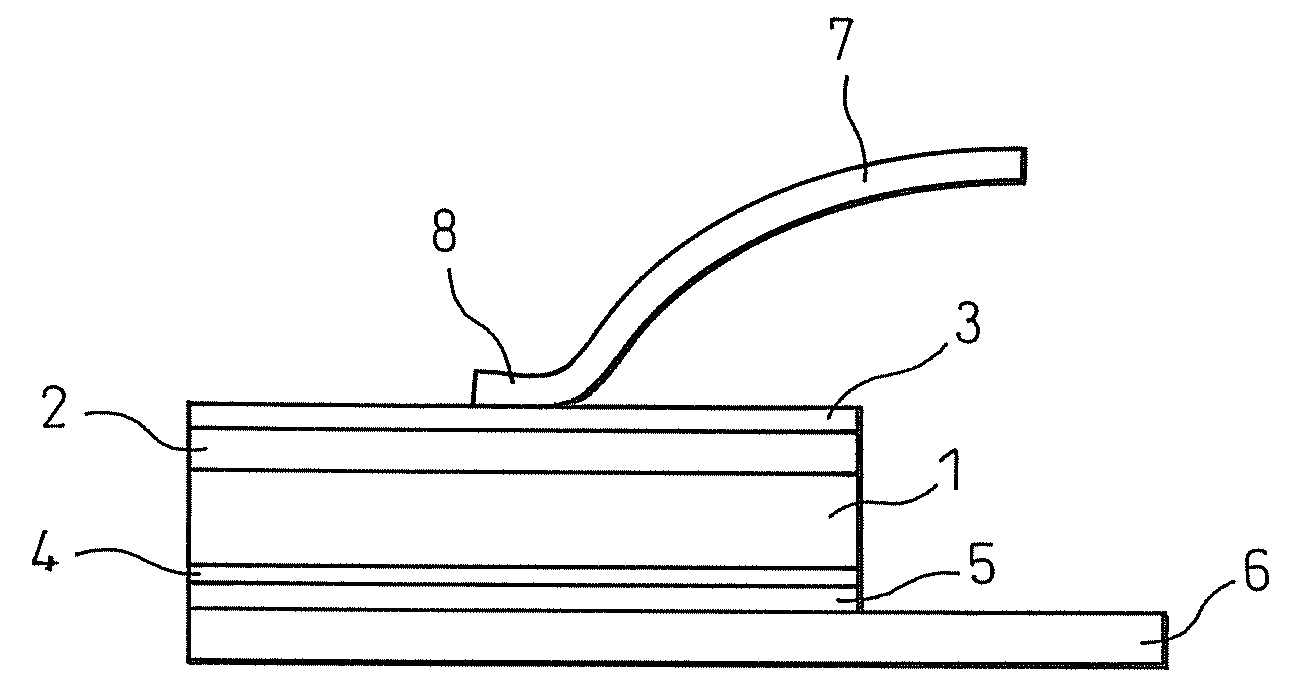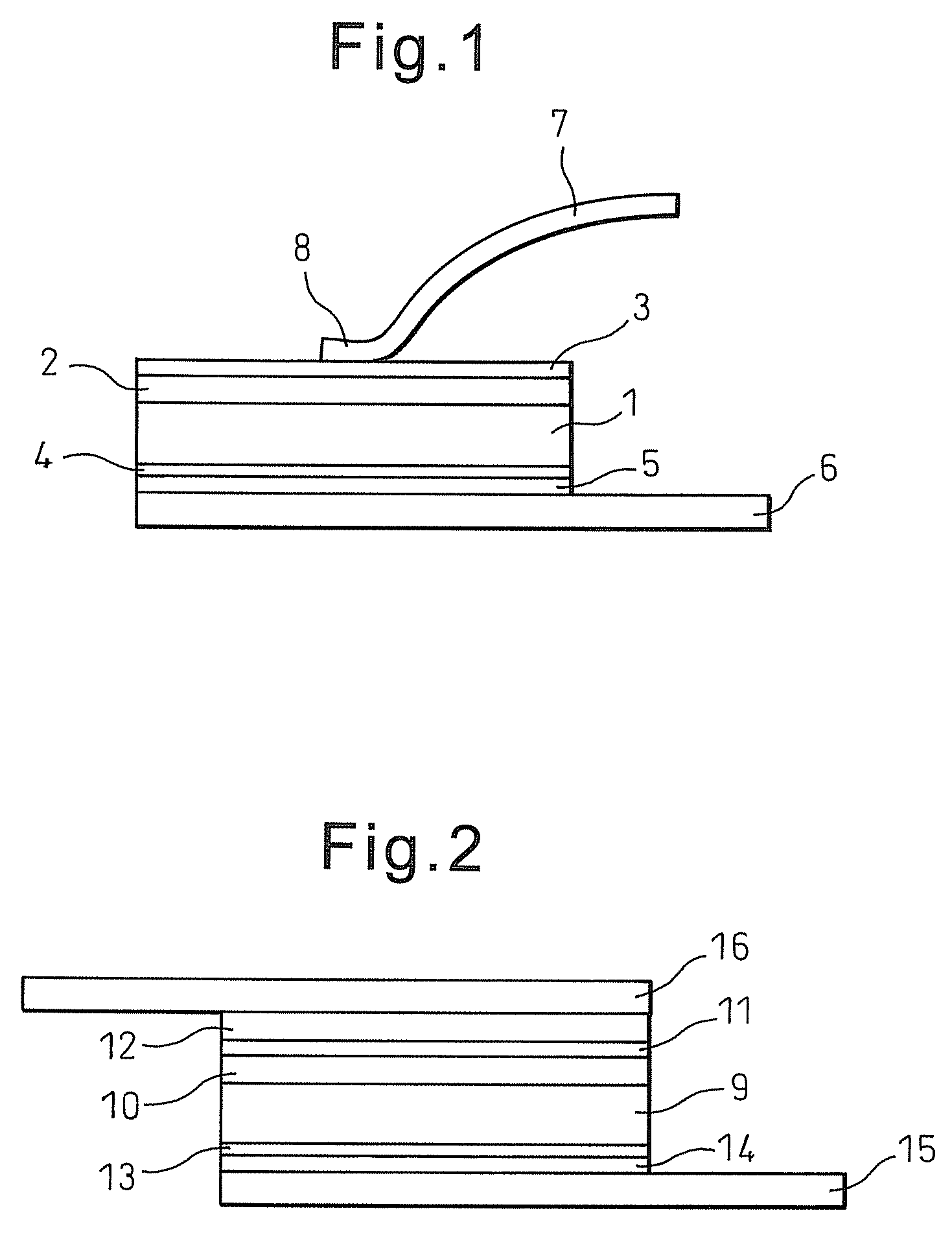Power semiconductor device
a technology of semiconductor devices and semiconductor chips, applied in semiconductor devices, semiconductor/solid-state device details, electrical apparatus, etc., can solve the problems of high thermal stress at the joints, inability to maintain the connection between the electrodes formed on the semiconductor chip and the wires, etc., to reduce the likelihood of cracking-destruction, high reliability, and high temperature operation
- Summary
- Abstract
- Description
- Claims
- Application Information
AI Technical Summary
Benefits of technology
Problems solved by technology
Method used
Image
Examples
first embodiment
[0041]FIG. 1 is a diagram showing the configuration of the present invention. A silicon carbide substrate (coefficient of linear expansion: 4.2×10−6 / K) designated by symbol 1 of FIG. 1 is 4H n-type. The silicon carbide substrate 1 is a 5 mm×5 mm square having a thickness of about 200 μm. A silicon carbide homoepitaxial layer designated by symbol 2 of FIG. 1 has a thickness of around 10 μm. A 1 μm thick molybdenum film (coefficient of linear expansion: 4.9×10−6 / K) 3 is formed on the epitaxial layer 2 by sputtering to form a schottky electrode. Further, symbol 4 of FIG. 1 is a 0.3 μm thick nickel film formed by sputtering. After the nickel film 4 has been formed, heat treatment is performed at 1000° C. for about 2 min to form an ohmic junction on the rear surface of the silicon carbide substrate (semiconductor device substrate) 1. In addition, molybdenum film metal (film) 5 is formed on rear surface of the nickel film 4 by sputtering to a thickness of about 2 μm.
[0042]A bus bar (conne...
second embodiment
[0047]FIG. 2 is a diagram showing the configuration of the present invention. An n-type GaN substrate (coefficient of thermal expansion: 5.6×10−6 / K) designated by symbol 9 of FIG. 2 is the size of a 3 mm×3 mm square having a thickness of about 300 μm. The thickness of a GaN homoepitaxial layer (film) designated by symbol 10 of FIG. 2 is about 10 μm. A 0.2 μm thick palladium film (coefficient of linear expansion: 11.8×10−6 / K) 11 is formed on the epitaxial layer by sputtering to form a schottky electrode. On this is formed by sputtering a 2 μm thick tungsten electrode (coefficient of linear expansion: 4.3×10−6 / K) 12.
[0048]Further, symbol 13 of FIG. 2 is a titanium and gold multilayer film formed by sputtering to a thickness of 0.3 μm. After formation of the multilayer film 13, heat treatment is performed at 900° C. for about 30 sec to form an ohmic junction on the rear surface of the GaN substrate. In addition, a tungsten metal (film) 14 is formed on the surface of the multilayer film...
PUM
 Login to View More
Login to View More Abstract
Description
Claims
Application Information
 Login to View More
Login to View More - R&D
- Intellectual Property
- Life Sciences
- Materials
- Tech Scout
- Unparalleled Data Quality
- Higher Quality Content
- 60% Fewer Hallucinations
Browse by: Latest US Patents, China's latest patents, Technical Efficacy Thesaurus, Application Domain, Technology Topic, Popular Technical Reports.
© 2025 PatSnap. All rights reserved.Legal|Privacy policy|Modern Slavery Act Transparency Statement|Sitemap|About US| Contact US: help@patsnap.com



